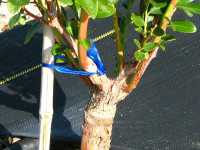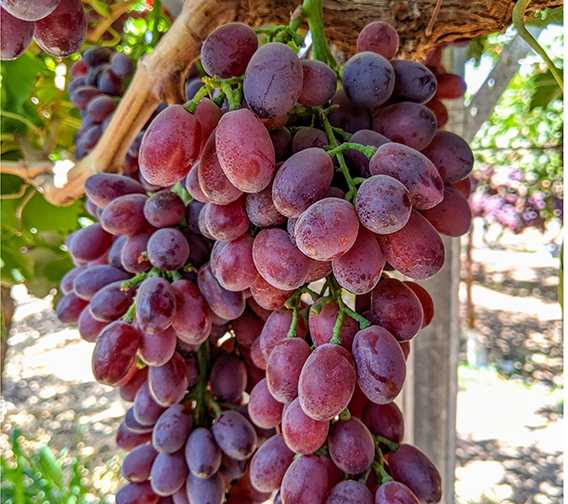Bright Idea For Bolstering Your Blueberry Crop

Florida’s blueberry crop is almost entirely hand harvested for the fresh market. While hand harvesting is the single greatest expense for growing blueberries for the fresh market in Florida, it has generally been accepted as part of the cost of doing business.
Recent concerns about the future availability of harvest labor and maintaining international competitiveness have caused many growers and blueberry researchers to re-evaluate harvesting practices for fresh market blueberries. Researchers at the University of Florida and other land grant institutions are addressing the challenges associated with mechanical harvest of blueberries for fresh markets in a variety of ways. The areas of research are varied but include pruning and training to minimize fruit loss during mechanical harvest, breeding and selecting improved cultivars for mechanical harvest, and improved postharvest handling of mechanically harvested fresh blueberries.
One area of research at the University of Florida involves using a blueberry relative, Vaccinium arboreum, commonly known as sparkleberry. Sparkleberry has many desirable characteristics including a deeper root system than blueberry, tolerance to soil pH values above the range generally associated with good blueberry growth, and a single-trunk growth habit, which is better suited for mechanical harvest than the multicane crowns of traditional blueberry varieties. Unfortunately, sparkleberry does not produce edible berries. Supported by funding from a USDA Specialty Crop Research Initiative grant, research at the University of Florida in cooperation with several other universities is attempting to utilize some of the beneficial sparkleberry traits in commercial blueberry production. Two approaches are being used to make use of these beneficial traits. The short-term approach is to graft existing highbush cultivars onto sparkleberry rootstocks. The longer-term approach is to cross sparkleberry with highbush in the breeding program to incorporate desired sparkleberry traits.
A Base To Build From
Commercial blueberry varieties are grown on their own roots because the multicane growth habit makes grafting or budding impractical. However, sparkleberry tends to have a single trunk and a growth habit more like a small tree than a bush. The single trunk would allow for increased harvest efficiency from the mechanical harvesters currently available for blueberry because the catch plates would close tighter around the base of the plant and fewer berries would be dropped.
A field study was established at the UF/IFAS Plant Science Research and Education Unit in 2011 comparing two commercial blueberry varieties (Farthing and Meadowlark) grown either as traditional, own-rooted, plants, or as grafted plants on sparkleberry rootstock. The grafted and own-rooted plants were planted in native, non-amended soil and in native soil amended with pine bark. The goal of this research is to determine if plants grafted on sparkleberry perform better in non-amended soil than traditional blueberry plants, and if plants grafted on sparkleberry can be mechanically harvested more efficiently because of their single-trunk growth habit than traditional blueberry plants with multiple canes at the crowns. The planting is still young and it will be several more years before any conclusions can be drawn from this research.
Creating A Spark
The longer-term approach is to breed desirable sparkleberry characteristics into commercial blueberry cultivars. Although sparkleberries and commercial blueberries are related, they do not cross in nature because of a difference in chromosome number. We treated sparkleberry seed with a chemical compound that can result in doubling of the number of chromosomes and then started searching for the proverbial needle in a haystack — a sparkleberry plant that would cross directly with blueberry. So far, we have identified 11 and have used those to create several dozen hybrids between sparkleberry and blueberry. We are currently using those hybrids to cross back to blueberry. Several thousand of these backcross seedlings have been developed and are currently under evaluation. The goal of this breeding effort is to retain all the desirable characteristics from sparkleberry, while developing blueberries with as high of fruit quality as current varieties.
Many blueberry researchers and growers, not only in Florida but throughout the U.S, believe that it’s only a matter of time before blueberries grown for the fresh market will be harvested primarily by machine. The sparkleberry research described here is only one of many approaches being used to address the challenges of transitioning to mechanized berry harvest. Only time will tell how important sparkleberry will be in this transition.
Funding for the sparkleberry research was funded by a USDA Specialty Crops Research Initiative grant.









